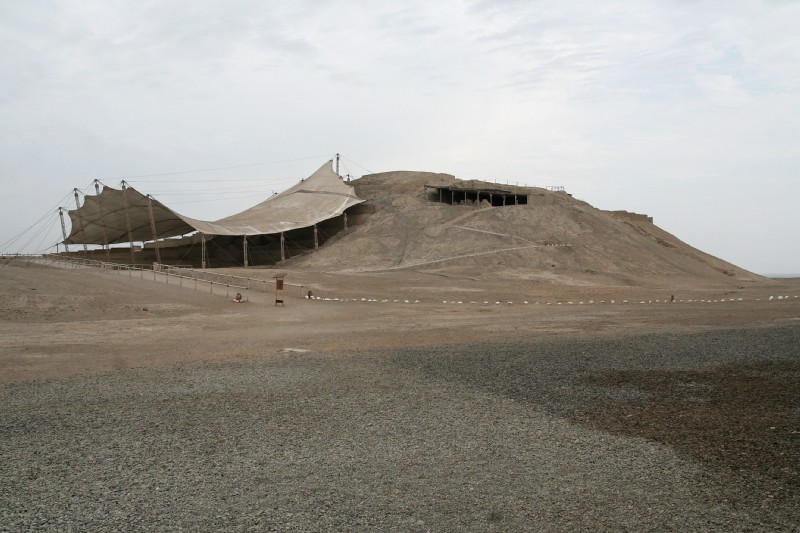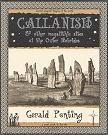<< Our Photo Pages >> El Brujo - Ancient Village or Settlement in Peru
Submitted by bat400 on Monday, 25 June 2012 Page Views: 11463
Multi-periodSite Name: El BrujoCountry: Peru
NOTE: This site is 185.608 km away from the location you searched for.
Type: Ancient Village or Settlement
Nearest Town: Trujilio, Peru Nearest Village: Cartavio
Latitude: 7.915S Longitude: 79.306W
Condition:
| 5 | Perfect |
| 4 | Almost Perfect |
| 3 | Reasonable but with some damage |
| 2 | Ruined but still recognisable as an ancient site |
| 1 | Pretty much destroyed, possibly visible as crop marks |
| 0 | No data. |
| -1 | Completely destroyed |
| 5 | Superb |
| 4 | Good |
| 3 | Ordinary |
| 2 | Not Good |
| 1 | Awful |
| 0 | No data. |
| 5 | Can be driven to, probably with disabled access |
| 4 | Short walk on a footpath |
| 3 | Requiring a bit more of a walk |
| 2 | A long walk |
| 1 | In the middle of nowhere, a nightmare to find |
| 0 | No data. |
| 5 | co-ordinates taken by GPS or official recorded co-ordinates |
| 4 | co-ordinates scaled from a detailed map |
| 3 | co-ordinates scaled from a bad map |
| 2 | co-ordinates of the nearest village |
| 1 | co-ordinates of the nearest town |
| 0 | no data |
Internal Links:
External Links:
I have visited· I would like to visit
bat400 visited on 6th Sep 2018 - their rating: Cond: 2 Amb: 4 Access: 4

Pyramids, Plazas, Farm Fields, Habitations.
This ancient site in the Chicama River Valley date back 5000 years, but was substantially enlarged by the Pre-Inca Moche culture (~100AD to 800AD.) The Mochicas lived along the northern coast of Peru, and are known for their decorative artifacts illustrating warfare and the decapitation of captives.
Excavations have been on-going at the El Brujo (The Wizard) site since the 1940's. The largest features are Huaco Cao Viejo, Huaca Prieta and Huaca El Brujo structures. These stepped pyramids were built in stages, with completed and decorated rooms, covered by newer layers over time.
The excavations of the Huaco Cao Viejo (Huaca Blanca) features polychrome painted stucco and stone carved basreliefs of armored warriors wielding war clubs. Also within the structure was the tomb of the tattoooed ruler or priestess, dubbed Señora de Cao.
Huaca Prieta lies closest to the ocean and bears the mark of the earliest archaeological excavation. The general area is sadly pock marked by years of looting holes.
A museum is on site, featuring the Lady of Cao's mummy and the contents of her tomb. Currently photography is allowed at both the site and the museum, except for the chamber where the Lady of Cao lies.
The central area of buildings and plazas is surrounded by the remains of irrigated farming fields. The colonial village Magdalena de Cao was built amid the El Brujo complex in an attempt to counteract the importance of the Pre-Conquest site. Now the colonial site is also the subject of excavations. (A more recent village, also called Magdalena de Cao, where beautiful modern murals celebrating the ancient site, Moche iconomgraphy, and the Lady of Cao have been painted, is nearby.
A brief article by Dr. Régulo Franco Jordán at go2peru describes the site and provides visitor information.
Note: Pre-Inca Cinnabar Mine may have provided tatoo dye for the 'Lady of Cao' at Peru's El Brujo Archaeological Complex.
You may be viewing yesterday's version of this page. To see the most up to date information please register for a free account.



Do not use the above information on other web sites or publications without permission of the contributor.
Nearby Images from Flickr






The above images may not be of the site on this page, but were taken nearby. They are loaded from Flickr so please click on them for image credits.
Click here to see more info for this site
Nearby sites
Click here to view sites on an interactive map of the areaKey: Red: member's photo, Blue: 3rd party photo, Yellow: other image, Green: no photo - please go there and take one, Grey: site destroyed
Download sites to:
KML (Google Earth)
GPX (GPS waypoints)
CSV (Garmin/Navman)
CSV (Excel)
To unlock full downloads you need to sign up as a Contributory Member. Otherwise downloads are limited to 50 sites.
Turn off the page maps and other distractions
Nearby sites listing. In the following links * = Image available
18.9km NE 40° Mocollope Ancient Village or Settlement
23.3km ESE 109° Cerro Campana* Sculptured Stone
30.4km SE 133° Huanchaquito-Las Llamas Misc. Earthwork
33.3km SE 130° Chan Chan* Ancient Village or Settlement
35.7km SE 126° Huaca Esmeralda* Pyramid / Mastaba
41.9km SE 125° Huaca del Sol* Pyramid / Mastaba
42.5km SE 125° Huaca de la Luna* Ancient Temple
42.8km SE 126° Museo Huacas de Moche Museum
47.0km ESE 111° Caballo Muerto Ancient Village or Settlement
101.1km NNE 30° Kuntur Wasi* Ancient Temple
106.5km N 4° Nanchoc Ancient Village or Settlement
108.8km NNW 341° Huaca el Pueblo Pyramid / Mastaba
113.5km NE 45° Cumbemayo Rock Art
126.1km NE 49° Callacpuma* Stone Circle
128.1km NNW 345° Huaca Rajada Pyramid / Mastaba
128.2km NE 47° Ventanillas de Otuzco Rock Cut Tomb
133.1km NNW 338° Ventarron - Temple of the Captured Deer Ancient Temple
135.9km NNW 338° Collud Ancient Temple
136.1km E 84° Marcahuamachuco* Ancient Village or Settlement
137.6km NNW 344° Cerro Pátapo Ancient Village or Settlement
140.9km ESE 116° La Galgada Pyramid / Mastaba
149.6km NNW 334° Museo Tumbas Reales de Sipán* Museum
150.8km NNW 332° Chotuna-Chornancap* Ancient Temple
166.6km NNW 339° Tucume* Ancient Village or Settlement
168.5km NNW 337° La Pava de Mochumí Burial Chamber or Dolmen
View more nearby sites and additional images



 We would like to know more about this location. Please feel free to add a brief description and any relevant information in your own language.
We would like to know more about this location. Please feel free to add a brief description and any relevant information in your own language. Wir möchten mehr über diese Stätte erfahren. Bitte zögern Sie nicht, eine kurze Beschreibung und relevante Informationen in Deutsch hinzuzufügen.
Wir möchten mehr über diese Stätte erfahren. Bitte zögern Sie nicht, eine kurze Beschreibung und relevante Informationen in Deutsch hinzuzufügen. Nous aimerions en savoir encore un peu sur les lieux. S'il vous plaît n'hesitez pas à ajouter une courte description et tous les renseignements pertinents dans votre propre langue.
Nous aimerions en savoir encore un peu sur les lieux. S'il vous plaît n'hesitez pas à ajouter une courte description et tous les renseignements pertinents dans votre propre langue. Quisieramos informarnos un poco más de las lugares. No dude en añadir una breve descripción y otros datos relevantes en su propio idioma.
Quisieramos informarnos un poco más de las lugares. No dude en añadir una breve descripción y otros datos relevantes en su propio idioma.